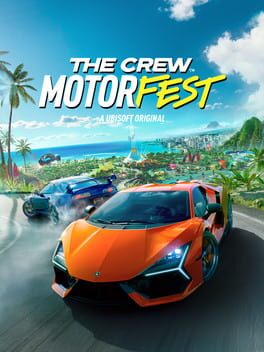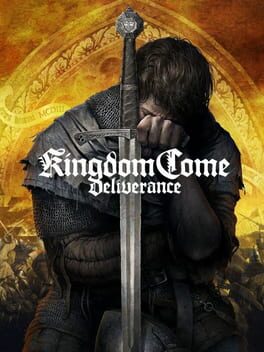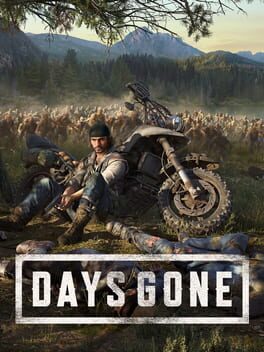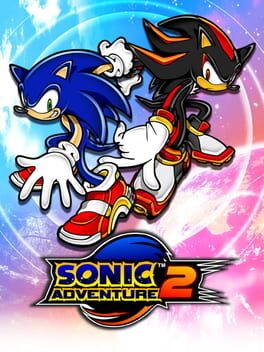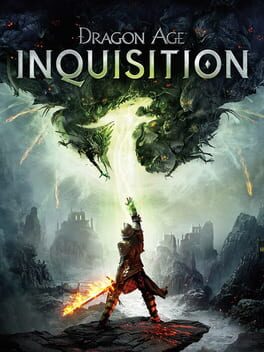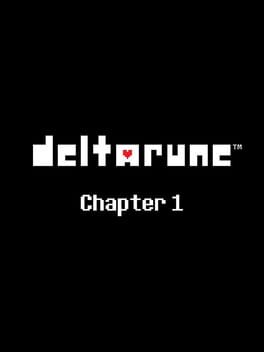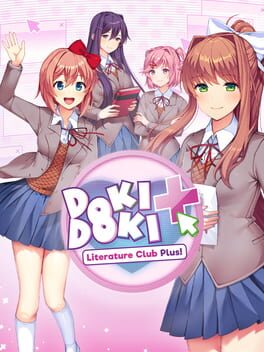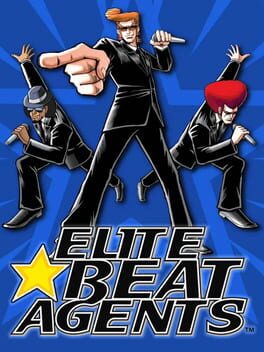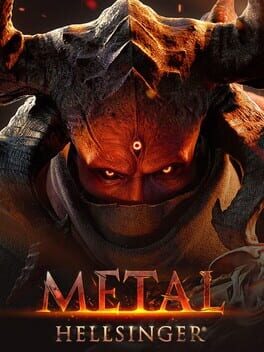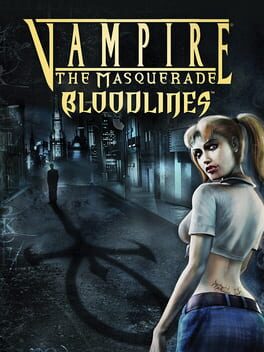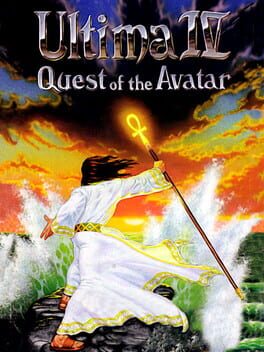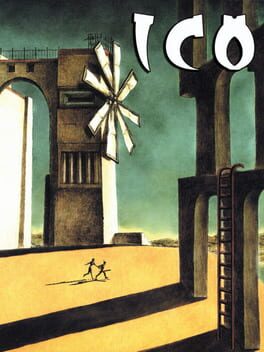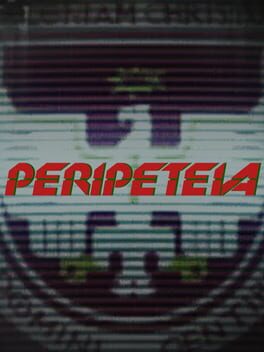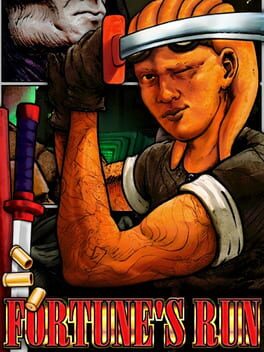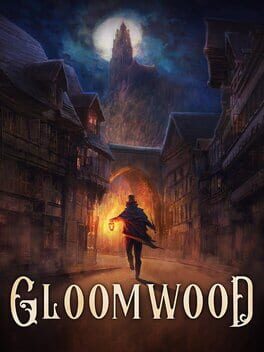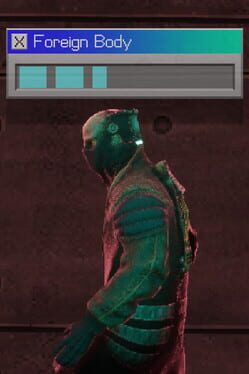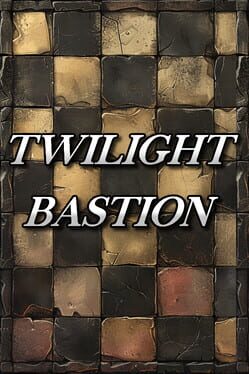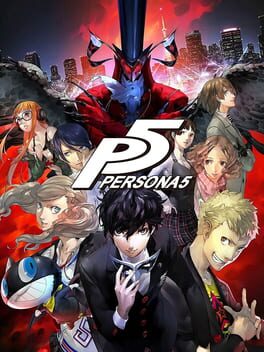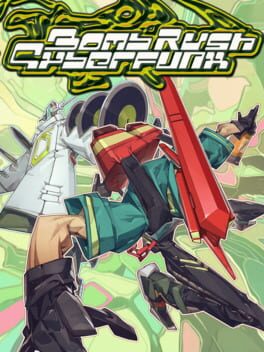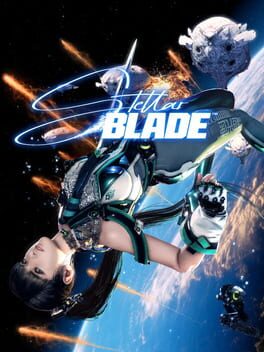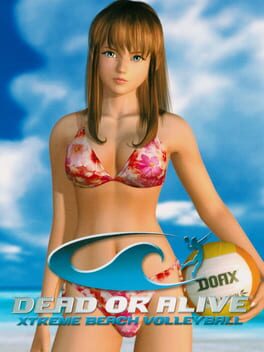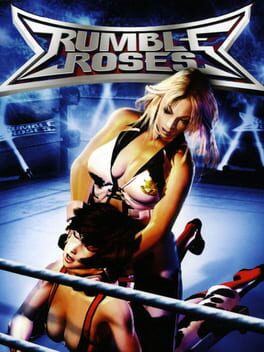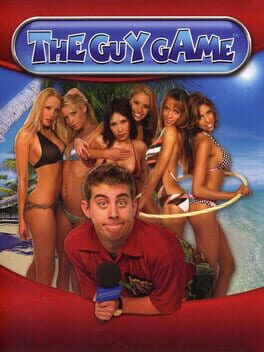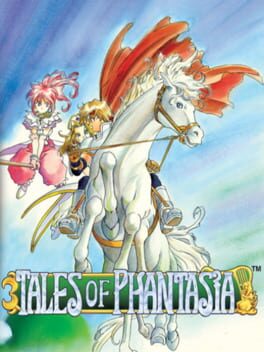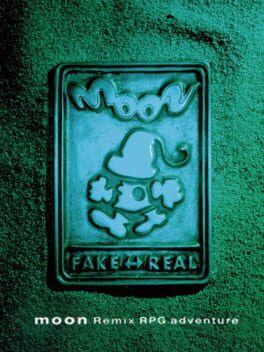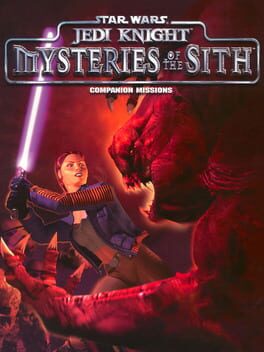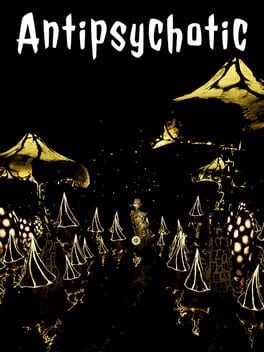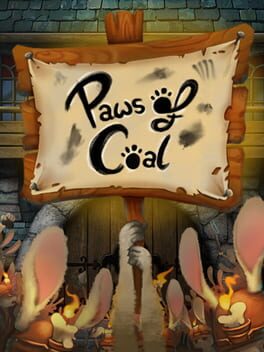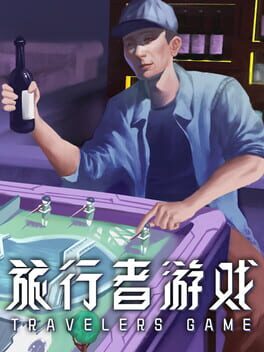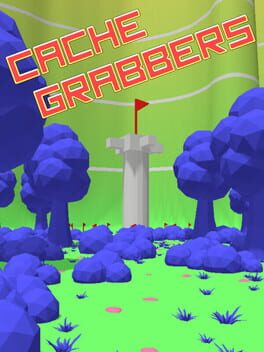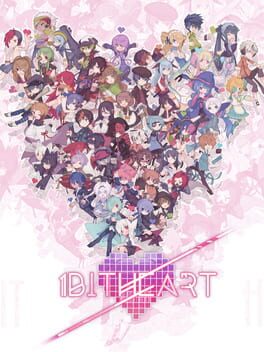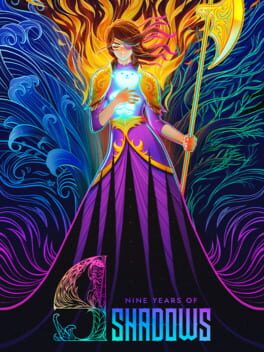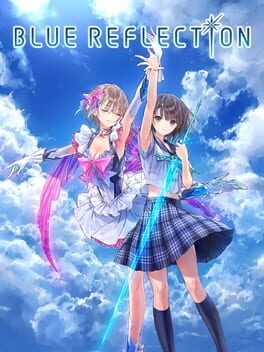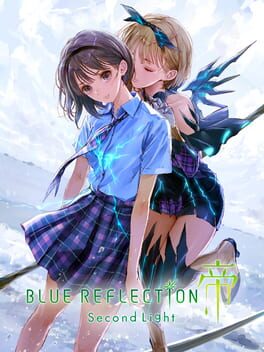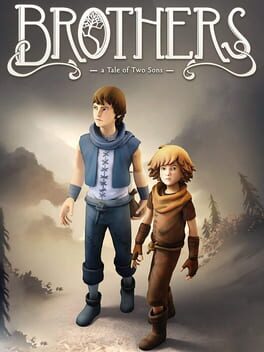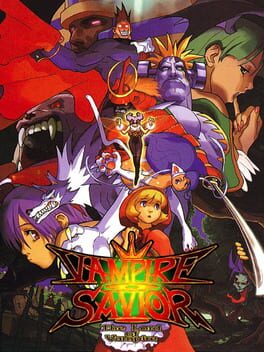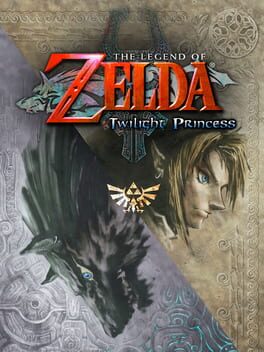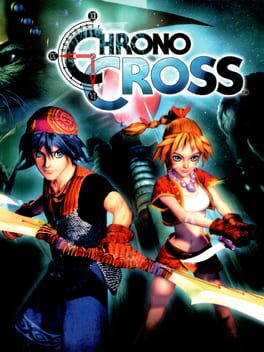TheAlkmist
258 reviews liked by TheAlkmist
The Crew: Motorfest
2023
Definitivamente um jogo da Ubisoft. Divertido e problemático ao mesmo tempo. Vendo o sucesso de Forza Horizon, a Ubisoft decidiu se inspirar (pra não dizer outra coisa) no jogo da Playground e introduzir um festival a The Crew.
Eu não gosto dos jogos anteriores dessa franquia, então qualquer mudança seria positiva pra mim e é meio isso que aconteceu. A grande novidade são as playlists, que são series de eventos de uma certa temática e funcionam como mini carreiras, são bem divertidas e o destaque do jogo, cada uma com um tom e apresentação diferente, entregando muita variedade. Não tem muito mais o que fazer fora isso pra um jogador solo, o resto do jogo é todo focado no online. O mapa é bem feito, bem bonito, mais detalhado e caprichado, até por ser menor, mas continua meio morto. A lista de veículos é bem completa e a gameplay é similar à do segundo jogo, mas com algumas atualizações, nada que mude muito sua experiencia, o problema do jogo anterior não era a gameplay. A sensação de velocidade e o sound design tão bem melhores que antes, deu pra perceber que foi um ponto onde se dedicaram mais. A má otimização do jogo e o Launcher PODRE da Ubisoft atrapalham, especialmente em eventos online.
Uma alternativa interessante a Forza Horizon, que consegue divertir. Recomendo numa promoção.
Eu não gosto dos jogos anteriores dessa franquia, então qualquer mudança seria positiva pra mim e é meio isso que aconteceu. A grande novidade são as playlists, que são series de eventos de uma certa temática e funcionam como mini carreiras, são bem divertidas e o destaque do jogo, cada uma com um tom e apresentação diferente, entregando muita variedade. Não tem muito mais o que fazer fora isso pra um jogador solo, o resto do jogo é todo focado no online. O mapa é bem feito, bem bonito, mais detalhado e caprichado, até por ser menor, mas continua meio morto. A lista de veículos é bem completa e a gameplay é similar à do segundo jogo, mas com algumas atualizações, nada que mude muito sua experiencia, o problema do jogo anterior não era a gameplay. A sensação de velocidade e o sound design tão bem melhores que antes, deu pra perceber que foi um ponto onde se dedicaram mais. A má otimização do jogo e o Launcher PODRE da Ubisoft atrapalham, especialmente em eventos online.
Uma alternativa interessante a Forza Horizon, que consegue divertir. Recomendo numa promoção.
My first Castlevania game.
The movements were really responsive. Alucard isn't slippery, he doesn't gain a weird momentum as soon as he starts moving forward, or any other shenanigan. It just felt very smooth. The same can be said about the bat form.
It was such a sick ability btw, being able to fly wherever you want, dodging every enemy while backtracking. And I like the detail of the bat changing color depending on Alucard's outfit.
The soundtrack is extremely catchy. There are elements from multiple musical genres, including classical, techno, rock and metal. It fitted perfectly with the gothic aesthetics of the game. The atmosphere is just very charming.
The game has a good amount of teleporters that are well spaced between each other. I could reach any part of the map pretty quickly. It's too rare in those retro games.
While some of the Bosses were too easy, I still enjoyed them a lot overall. Many of them have a really cool chara design, like Granfaloon, Medusa, Scylla and Shaft. And honestly, I usually prefer too easy rather than too hard.
By the way, having to fight Doppelganger 30 minutes into my playthrough was a big surprise. It was probably the most difficult Boss in the entire game. Still a great Boss tho 👌
I liked the RPG aspect of the game, with the items you can drop on defeated enemies, or by finding them during your exploration. Whether it's weapons, cloaks or talismans to make Alucard stronger, or consumables to heal yourself and boost your statistics momentarily in battle. I wish we could use items without having to unequip our weapon or shield tho...
The sub-weapons I used the most were the knives for their ease of use & high damage, and also the stopwatch. I didn't use the other ones very often.
I like how there is a possibility of getting a bad ending if you rush to the top of the castle before doing the necessary to save Richter. I ruthlessly killed him even though he is a human, and immediatly realized my mistake.
Hopefully I was able to reload my save right away to get the true ending.
I remember being stuck at some point, and I found a clue while looking at the tactic for Dracula, in the Librarian's Shop. When you watch this tutorial where Richter is fighting him, you can see that he opens a secret path at the very beginning, right before the fight. So I was able to go there myself, and I found an item that helped me to progress. I just think that was a cool way to proceed.
At first, when I reached the Reverse Castle, I was excited about the idea to go through the same map but upside down.
But when I realized that many of the rooms were now filled to the brim with enemies, I decided to keep using the bat & mist to breeze through the map and reach the Final Boss a lot quicker.
This last segment in the Reverse Castle felt like padding to be honest. It wasn't as great as the rest of the game.
Still, I had a very good time with the game overall. I enjoyed it more than Super Metroid which I played right before SOTN. (I mention it because I saw that there is a heated debate between the fans of both games to decide which one is the best 😂)
Anyway, if I play another Castlevania game in the future, it's gonna be Aria of Sorrow! 👍
----------Playtime & Completion----------
[Started on May 8th & finished on May 10th 2024]
Playtime: 13 hours
I was at 88% after getting the first ending.
And at 150% after getting the true ending.
The movements were really responsive. Alucard isn't slippery, he doesn't gain a weird momentum as soon as he starts moving forward, or any other shenanigan. It just felt very smooth. The same can be said about the bat form.
It was such a sick ability btw, being able to fly wherever you want, dodging every enemy while backtracking. And I like the detail of the bat changing color depending on Alucard's outfit.
The soundtrack is extremely catchy. There are elements from multiple musical genres, including classical, techno, rock and metal. It fitted perfectly with the gothic aesthetics of the game. The atmosphere is just very charming.
The game has a good amount of teleporters that are well spaced between each other. I could reach any part of the map pretty quickly. It's too rare in those retro games.
While some of the Bosses were too easy, I still enjoyed them a lot overall. Many of them have a really cool chara design, like Granfaloon, Medusa, Scylla and Shaft. And honestly, I usually prefer too easy rather than too hard.
By the way, having to fight Doppelganger 30 minutes into my playthrough was a big surprise. It was probably the most difficult Boss in the entire game. Still a great Boss tho 👌
I liked the RPG aspect of the game, with the items you can drop on defeated enemies, or by finding them during your exploration. Whether it's weapons, cloaks or talismans to make Alucard stronger, or consumables to heal yourself and boost your statistics momentarily in battle. I wish we could use items without having to unequip our weapon or shield tho...
The sub-weapons I used the most were the knives for their ease of use & high damage, and also the stopwatch. I didn't use the other ones very often.
I like how there is a possibility of getting a bad ending if you rush to the top of the castle before doing the necessary to save Richter. I ruthlessly killed him even though he is a human, and immediatly realized my mistake.
Hopefully I was able to reload my save right away to get the true ending.
I remember being stuck at some point, and I found a clue while looking at the tactic for Dracula, in the Librarian's Shop. When you watch this tutorial where Richter is fighting him, you can see that he opens a secret path at the very beginning, right before the fight. So I was able to go there myself, and I found an item that helped me to progress. I just think that was a cool way to proceed.
At first, when I reached the Reverse Castle, I was excited about the idea to go through the same map but upside down.
But when I realized that many of the rooms were now filled to the brim with enemies, I decided to keep using the bat & mist to breeze through the map and reach the Final Boss a lot quicker.
This last segment in the Reverse Castle felt like padding to be honest. It wasn't as great as the rest of the game.
Still, I had a very good time with the game overall. I enjoyed it more than Super Metroid which I played right before SOTN. (I mention it because I saw that there is a heated debate between the fans of both games to decide which one is the best 😂)
Anyway, if I play another Castlevania game in the future, it's gonna be Aria of Sorrow! 👍
----------Playtime & Completion----------
[Started on May 8th & finished on May 10th 2024]
Playtime: 13 hours
I was at 88% after getting the first ending.
And at 150% after getting the true ending.
Portal 2
2011
I never played portal 1 but I remember trying Portal 2 years ago, completing it and thinking it was a good time. Just the other day, I decided to give it back a shot and..... OMG I have no idea what I was missing.
When it comes to videogames that are considered "perfect" by the masses, most of the time that definition can feel kind of overused: most title that a lotta people consider perfect are not my perspnal cup of tea.
Not in this case: Portal 2 deserves all of the praises it gets.
It starts without wasting your time, presenting an experience that perfectly mixes creative puzzle solving with physics that feel revolutionary to this day.
Glados, Wjeatley and any other minor NPC have such and amazing writing that you will warm up to them in no time, and a stpry that is able to narrative of a dystopic dark reality while also being extremely goody and enjoyable. You want to stay tp see what these frealy machines will say to you, or how the facility that kept Chell slowly unwraps its own secrets.
It's an amazong game that doesn't stop there: other than the campaign you got a fantastic coop mode (the little I played of it was enough to male it feel fantastic) that links to the main story, and one of the best level creation ever made.
The game is not that long, mostly slowed dpwn by some pf the tougher pizzles, but every second of this experience is enjoyable and absplitely worth it.
Portal 2 is a masterpiece. Everyone should give a shot to this one.
When it comes to videogames that are considered "perfect" by the masses, most of the time that definition can feel kind of overused: most title that a lotta people consider perfect are not my perspnal cup of tea.
Not in this case: Portal 2 deserves all of the praises it gets.
It starts without wasting your time, presenting an experience that perfectly mixes creative puzzle solving with physics that feel revolutionary to this day.
Glados, Wjeatley and any other minor NPC have such and amazing writing that you will warm up to them in no time, and a stpry that is able to narrative of a dystopic dark reality while also being extremely goody and enjoyable. You want to stay tp see what these frealy machines will say to you, or how the facility that kept Chell slowly unwraps its own secrets.
It's an amazong game that doesn't stop there: other than the campaign you got a fantastic coop mode (the little I played of it was enough to male it feel fantastic) that links to the main story, and one of the best level creation ever made.
The game is not that long, mostly slowed dpwn by some pf the tougher pizzles, but every second of this experience is enjoyable and absplitely worth it.
Portal 2 is a masterpiece. Everyone should give a shot to this one.
Days Gone
2019
Dei uma chance após ver um milhão de vídeos dizendo que era um jogo extremamente injustiçado, mas na verdade é só um jogo glamourizado da Ubisoft. História genérica com uma temática batida, um protagonista sem carisma nenhum que parece que saiu direto de uma série estupida da CW, um mundo aberto totalmente desinteressante com um visual horrendo, design de missões pior que muitos jogos do início da sexta geração. Pelo menos andar com a motinha é bem legal e o gunplay é eficiente pra matar os zumbis.
Sonic Adventure 2
2001
Sonic Adventure 1 Review
I recently went on a nostalgia trip by experiencing the original version of Sonic Adventure for the first time, after only having played the DX version on the GameCube. Once I finished it, I decided to continue that nostalgia trip by going ahead and playing through the Dreamcast version of its sequel as well. I was quite fond of both games as a kid, but at some point, I got the idea in my head that the first Adventure was better than the second. After coming back to both games, I no longer believe that to be true. Both games have problems, but Sonic Adventure 2 is a far more consistent and polished experience. It definitely has some low points, but it’s still a solid improvement over its predecessor that trims a lot of its fat.
After Dr. Eggman looks into his family history, he discovers a top secret project that was worked on by his grandfather, Dr. Gerald Robotnik. He infiltrates a military base where this project was being stored and uncovers Shadow the Hedgehog: The Ultimate Lifeform. Shadow promises Eggman a wish and brings Eggman to the Space Colony ARK, where he shows off the Eclipse Canon, a weapon of mass destruction powered by the seven Chaos Emeralds. Meanwhile, the military mistakes Sonic for Shadow, and their forces set out to capture him, all the while completely unaware they’re chasing after the wrong hedgehog. Sonic, Tails and Knuckles once again band together to take down Eggman, Shadow, and the mysterious Rouge the Bat and clear Sonic’s name before Eggman and his allies manage to obtain all of the Chaos Emeralds and power up the Eclipse Canon.
Instead of each playable character having their own unique campaign to play through, the main story of Sonic Adventure 2 is told through two campaigns that each star three characters. There’s Hero, which stars the classic trio of Sonic, Tails and Knuckles, and Dark, which stars Dr. Eggman and newcomers Shadow the Hedgehog and Rouge the Bat. One character from each campaign share a different style of gameplay that comes from the first Adventure. This time around each character has their own unique stages, unlike in the previous game, where you generally played through chopped up versions of Sonic’s stages. For the most part, each character having their own unique stage is to Sonic Adventure 2’s benefit, and while some stages do have flaws that I’ll be getting into, at the very least this keeps the game from feeling as repetitive as Sonic Adventure did with its stages.
Sonic and Shadow’s stages feature the same speed focused platforming gameplay as Sonic’s stages from Adventure. They’re no longer composed of multiple sections, but the stages themselves are still comparable in length to the ones from the previous game. These stages are all fantastic, and once again, easily the best part of the game in general. They’re all laser focused on bringing out the best of these characters’ gameplay. I also had significantly less issues with the camera this time around, which was one of my biggest hang ups with the first Adventure. There were definitely still times where the camera would freak out or not cooperate, but not nearly as much as in the previous game.
Tails and Eggman’s gameplay is a more refined version of E-102 Gamma’s gameplay from the previous game. Tails and Eggman each pilot a small mech, and they run and gun throughout their stages with the same auto-homing shots as Gamma. This is where each character having their own unique stage really shines, as Tails and Eggman’s stages offer unique platforming challenges built around their moveset. Their stages are a lot longer compared to Gamma’s as well, giving a chance for their gameplay to actually breathe. My biggest complaint with Gamma’s gameplay and stages was that they all felt rather braindead. Since your projectiles automatically homed in on whatever you target, there wasn’t really anything stopping you from just targeting everything without any second thought. Tails and Eggman’s gameplay isn’t quite as trivial as Gamma’s was. While it’s still rather easy for the most part, there are actually a few enemies that require you to time your shots, as well as a couple of stages that will actually punish you for mindlessly targeting and shooting everything with environmental hazards that can cause you to take damage or die if you end up shooting them, which is a great way to force you to pay attention to what you’re shooting.
Finally, Knuckles and Rouge share Knuckles’ exploration-based gameplay from Adventure , where you search through stages for pieces of the Master Emerald. Unfortunately, despite also being given unique stages, Knuckles and Rouge’s gameplay isn’t a direct upgrade from Adventure, and it’s during their stages where a lot of my problems with the game stem from. For starters, the Emerald Radar, which is a tool that would beep at increasingly faster speeds the closer you get to an Emerald piece, was changed so that it only detects one Emerald piece at a time, whereas in Adventure, it could detect all three pieces at once. I have a theory about why this was done: Knuckles stages in Adventure tended to be rather small in terms of scale, and having the radar being able to detect all three Emerald pieces at once made it easy to find them rather quickly. In Adventure 2 however, all of Knuckles’ (and Rogue’s) stages are a lot larger compared to Knuckles’ stages in the previous game, so it makes hunting down the Emerald pieces one at a time take a lot longer. This problem gets worse with each subsequent stage, as they get larger and larger, coming to a head with the stages Meteor Herd and Mad Space, the final stages for Knuckles and Rouge respectively. These stages are so large that it can take up to 15 minutes to beat them if you’re unlucky with where the Emerald pieces are placed. Also, the one key difference between the Dreamcast version and the GameCube version of Sonic Adventure 2 that would make me recommend the latter over the former is that if Knuckles or Rouge walk or climb over a surface where an Emerald piece is buried, an exclamation point will appear above their head, letting you know that the piece is buried in that specific spot. This exclamation point doesn’t appear in the Dreamcast version, which made trying to find buried Emerald pieces a much bigger headache.
One aspect of Sonic Adventure that I completely forgot to talk about in my review for it was its various hub worlds that you need to travel through in-between stages. The main reason why I forgot to mention them was because of how little they really added to the game. They felt like they were just there for the sake of being there. They were rather small, they weren’t very interesting to explore, and there wasn’t much you could do in them besides just going into one of the characters’ levels or the Chao Garden. You could find some optional power ups for characters, which admittedly were kind of useful, but also weren’t necessary to finish the game and didn’t really enrich the experience that much further. As such, it’s no surprise that they were cut from Sonic Adventure 2, which was truly for the best. Instead, each campaign simply has one character’s stage follow another, and you can travel to the Chao Garden by finding a Chao Key item in a stage.
The story is a bit more straightforward and less ambitious than Sonic Adventure’s, but I think that was for the best, as it flows a lot better. It’s a Sonic game, so the writing isn’t some airtight masterwork of fiction, but it’s a decent enough story with some high stakes and thrilling moments. There are some aspects to the story that, even as a kid, I thought were questionable. In particular, the fact that anyone could confuse Sonic for Shadow and vice versa when they look nothing alike always confused me, even back then. Also Amy Rose appears as a non-playable character in the story, and her presence in general really confuses me. She frequently just… appears in locations with little to no explanation. It feels like she was meant to have a larger role in the game that got cut down heavily. The voice acting sounds a lot better this time around. Some characters do still sound a bit stiff like Tails and Rouge, but everyone else sounds like they have a lot more energy and are actually trying with their performances. Though Deem Bristow’s Eggman once again steals the show, I really gotta say, I feel like Ryan Drummond’s Sonic in particular has significantly improved. He sounds way more lively than before, and he does a better job capturing Sonic’s wit and attitude.
The music continues the Sonic series’ tradition of being fantastic. Something that I noticed during this playthrough is that each character has a specific type of music that plays during their stages. Sonic’s stages have fast paced punk rock tracks, Tails has upbeat rock that occasionally features some synthesizers, Knuckles has old school hip hop, Shadow features very bass heavy techno with distorted vocals, Eggman has heavy rock tracks that feature a lot of synthesizers, and Rouge has upbeat jazz tracks very reminiscent of spy films like the 007 movies, but with a lot of sensual sounding female background vocals. It’s a really excellent touch, and I very much dig how each stage’s song feels like it was tailored not just for the stage, but for the characters themselves. Some of my favorite tracks include Green Forest, Pumpkin Hill, White Jungle, and Cosmic Wall. (Yes I like City Escape too, I just thought claiming it as a favorite would be disingenuous and boring).
One of the game’s most notable issues is how truly awful its audio mixing and sound design is. Sound effects are deafeningly loud, in particular Tails and Eggman’s targeting laser as well as the Emerald Radar in Knuckles and Rouge’s stages. They both beep obnoxiously loudly. In stages where the Military are pursuing you like in Metal Harbor, Weapons Bed, or Mission Street, there will be this airplane engine sound effect that is also just so ridiculously loud it drowns out all of the other sounds and music that plays on the stage. Meanwhile the dialogue is too quiet, and characters frequently talk over each other. This can lead to some funny exchanges, such as during the cutscene where Sonic and Shadow battle one another on Prison Island, which for whatever reason has always tickled my funny bone even when I was little. The sound design doesn’t make the game unplayable by any means, but it’s very noticeable, jarring and annoying.
I was surprised to find that I still dig Sonic Adventure 2, at least more than I expected to after revisiting Sonic Adventure just before. There was a clear effort to improve upon Sonic Adventure, and I really respect that. I do think they did a rather decent job doing so for the most part. The Knuckles and Rouge stages are definitely a drag, the audio mixing is rather horrendous, and there are aspects of the story that can be a bit questionable, but the game as a whole still manages to be a pretty good time despite that, thanks to the excellent gameplay and level design of the other characters’ stages. At its best, Sonic Adventure 2 still manages to be hype even after all these years, and that’s not just the nostalgia talking.
I recently went on a nostalgia trip by experiencing the original version of Sonic Adventure for the first time, after only having played the DX version on the GameCube. Once I finished it, I decided to continue that nostalgia trip by going ahead and playing through the Dreamcast version of its sequel as well. I was quite fond of both games as a kid, but at some point, I got the idea in my head that the first Adventure was better than the second. After coming back to both games, I no longer believe that to be true. Both games have problems, but Sonic Adventure 2 is a far more consistent and polished experience. It definitely has some low points, but it’s still a solid improvement over its predecessor that trims a lot of its fat.
After Dr. Eggman looks into his family history, he discovers a top secret project that was worked on by his grandfather, Dr. Gerald Robotnik. He infiltrates a military base where this project was being stored and uncovers Shadow the Hedgehog: The Ultimate Lifeform. Shadow promises Eggman a wish and brings Eggman to the Space Colony ARK, where he shows off the Eclipse Canon, a weapon of mass destruction powered by the seven Chaos Emeralds. Meanwhile, the military mistakes Sonic for Shadow, and their forces set out to capture him, all the while completely unaware they’re chasing after the wrong hedgehog. Sonic, Tails and Knuckles once again band together to take down Eggman, Shadow, and the mysterious Rouge the Bat and clear Sonic’s name before Eggman and his allies manage to obtain all of the Chaos Emeralds and power up the Eclipse Canon.
Instead of each playable character having their own unique campaign to play through, the main story of Sonic Adventure 2 is told through two campaigns that each star three characters. There’s Hero, which stars the classic trio of Sonic, Tails and Knuckles, and Dark, which stars Dr. Eggman and newcomers Shadow the Hedgehog and Rouge the Bat. One character from each campaign share a different style of gameplay that comes from the first Adventure. This time around each character has their own unique stages, unlike in the previous game, where you generally played through chopped up versions of Sonic’s stages. For the most part, each character having their own unique stage is to Sonic Adventure 2’s benefit, and while some stages do have flaws that I’ll be getting into, at the very least this keeps the game from feeling as repetitive as Sonic Adventure did with its stages.
Sonic and Shadow’s stages feature the same speed focused platforming gameplay as Sonic’s stages from Adventure. They’re no longer composed of multiple sections, but the stages themselves are still comparable in length to the ones from the previous game. These stages are all fantastic, and once again, easily the best part of the game in general. They’re all laser focused on bringing out the best of these characters’ gameplay. I also had significantly less issues with the camera this time around, which was one of my biggest hang ups with the first Adventure. There were definitely still times where the camera would freak out or not cooperate, but not nearly as much as in the previous game.
Tails and Eggman’s gameplay is a more refined version of E-102 Gamma’s gameplay from the previous game. Tails and Eggman each pilot a small mech, and they run and gun throughout their stages with the same auto-homing shots as Gamma. This is where each character having their own unique stage really shines, as Tails and Eggman’s stages offer unique platforming challenges built around their moveset. Their stages are a lot longer compared to Gamma’s as well, giving a chance for their gameplay to actually breathe. My biggest complaint with Gamma’s gameplay and stages was that they all felt rather braindead. Since your projectiles automatically homed in on whatever you target, there wasn’t really anything stopping you from just targeting everything without any second thought. Tails and Eggman’s gameplay isn’t quite as trivial as Gamma’s was. While it’s still rather easy for the most part, there are actually a few enemies that require you to time your shots, as well as a couple of stages that will actually punish you for mindlessly targeting and shooting everything with environmental hazards that can cause you to take damage or die if you end up shooting them, which is a great way to force you to pay attention to what you’re shooting.
Finally, Knuckles and Rouge share Knuckles’ exploration-based gameplay from Adventure , where you search through stages for pieces of the Master Emerald. Unfortunately, despite also being given unique stages, Knuckles and Rouge’s gameplay isn’t a direct upgrade from Adventure, and it’s during their stages where a lot of my problems with the game stem from. For starters, the Emerald Radar, which is a tool that would beep at increasingly faster speeds the closer you get to an Emerald piece, was changed so that it only detects one Emerald piece at a time, whereas in Adventure, it could detect all three pieces at once. I have a theory about why this was done: Knuckles stages in Adventure tended to be rather small in terms of scale, and having the radar being able to detect all three Emerald pieces at once made it easy to find them rather quickly. In Adventure 2 however, all of Knuckles’ (and Rogue’s) stages are a lot larger compared to Knuckles’ stages in the previous game, so it makes hunting down the Emerald pieces one at a time take a lot longer. This problem gets worse with each subsequent stage, as they get larger and larger, coming to a head with the stages Meteor Herd and Mad Space, the final stages for Knuckles and Rouge respectively. These stages are so large that it can take up to 15 minutes to beat them if you’re unlucky with where the Emerald pieces are placed. Also, the one key difference between the Dreamcast version and the GameCube version of Sonic Adventure 2 that would make me recommend the latter over the former is that if Knuckles or Rouge walk or climb over a surface where an Emerald piece is buried, an exclamation point will appear above their head, letting you know that the piece is buried in that specific spot. This exclamation point doesn’t appear in the Dreamcast version, which made trying to find buried Emerald pieces a much bigger headache.
One aspect of Sonic Adventure that I completely forgot to talk about in my review for it was its various hub worlds that you need to travel through in-between stages. The main reason why I forgot to mention them was because of how little they really added to the game. They felt like they were just there for the sake of being there. They were rather small, they weren’t very interesting to explore, and there wasn’t much you could do in them besides just going into one of the characters’ levels or the Chao Garden. You could find some optional power ups for characters, which admittedly were kind of useful, but also weren’t necessary to finish the game and didn’t really enrich the experience that much further. As such, it’s no surprise that they were cut from Sonic Adventure 2, which was truly for the best. Instead, each campaign simply has one character’s stage follow another, and you can travel to the Chao Garden by finding a Chao Key item in a stage.
The story is a bit more straightforward and less ambitious than Sonic Adventure’s, but I think that was for the best, as it flows a lot better. It’s a Sonic game, so the writing isn’t some airtight masterwork of fiction, but it’s a decent enough story with some high stakes and thrilling moments. There are some aspects to the story that, even as a kid, I thought were questionable. In particular, the fact that anyone could confuse Sonic for Shadow and vice versa when they look nothing alike always confused me, even back then. Also Amy Rose appears as a non-playable character in the story, and her presence in general really confuses me. She frequently just… appears in locations with little to no explanation. It feels like she was meant to have a larger role in the game that got cut down heavily. The voice acting sounds a lot better this time around. Some characters do still sound a bit stiff like Tails and Rouge, but everyone else sounds like they have a lot more energy and are actually trying with their performances. Though Deem Bristow’s Eggman once again steals the show, I really gotta say, I feel like Ryan Drummond’s Sonic in particular has significantly improved. He sounds way more lively than before, and he does a better job capturing Sonic’s wit and attitude.
The music continues the Sonic series’ tradition of being fantastic. Something that I noticed during this playthrough is that each character has a specific type of music that plays during their stages. Sonic’s stages have fast paced punk rock tracks, Tails has upbeat rock that occasionally features some synthesizers, Knuckles has old school hip hop, Shadow features very bass heavy techno with distorted vocals, Eggman has heavy rock tracks that feature a lot of synthesizers, and Rouge has upbeat jazz tracks very reminiscent of spy films like the 007 movies, but with a lot of sensual sounding female background vocals. It’s a really excellent touch, and I very much dig how each stage’s song feels like it was tailored not just for the stage, but for the characters themselves. Some of my favorite tracks include Green Forest, Pumpkin Hill, White Jungle, and Cosmic Wall. (Yes I like City Escape too, I just thought claiming it as a favorite would be disingenuous and boring).
One of the game’s most notable issues is how truly awful its audio mixing and sound design is. Sound effects are deafeningly loud, in particular Tails and Eggman’s targeting laser as well as the Emerald Radar in Knuckles and Rouge’s stages. They both beep obnoxiously loudly. In stages where the Military are pursuing you like in Metal Harbor, Weapons Bed, or Mission Street, there will be this airplane engine sound effect that is also just so ridiculously loud it drowns out all of the other sounds and music that plays on the stage. Meanwhile the dialogue is too quiet, and characters frequently talk over each other. This can lead to some funny exchanges, such as during the cutscene where Sonic and Shadow battle one another on Prison Island, which for whatever reason has always tickled my funny bone even when I was little. The sound design doesn’t make the game unplayable by any means, but it’s very noticeable, jarring and annoying.
I was surprised to find that I still dig Sonic Adventure 2, at least more than I expected to after revisiting Sonic Adventure just before. There was a clear effort to improve upon Sonic Adventure, and I really respect that. I do think they did a rather decent job doing so for the most part. The Knuckles and Rouge stages are definitely a drag, the audio mixing is rather horrendous, and there are aspects of the story that can be a bit questionable, but the game as a whole still manages to be a pretty good time despite that, thanks to the excellent gameplay and level design of the other characters’ stages. At its best, Sonic Adventure 2 still manages to be hype even after all these years, and that’s not just the nostalgia talking.
Sim e é mais um game sofrendo da minha crise de RPGs kkkkkk, o meu ponto de partida de início, na série Dragon Age seria o Origins, porém me broxou o fato de não ter suporte para controle através do gamepass e eu precisaria remapear todos os botões para adaptar o Rog Ally e simular um mouse e teclado. O que acabou fazendo eu começar direto pelo Inquisiton.
Uma história misteriosa e cheia de crenças, me parece que fora alguns personagens já conhecidos, é possível conectar os acontecimentos dos games anteriores para esse facilmente.
Sobre gameplay, um combate com um ritmo que não me agradou muito, quase simulando um mmo mas ao mesmo tempo dando mobilidade, acaba que ficou bem encima do muro. A opção de utilizar a câmera tática é bem diferente, mas diria que tira a diversão do combate ao acelerar os acontecimentos e a ideia de controlar todos os peões acaba deixando as táticas de combate mais confusas do que variadas. Pelo menos foi o que eu senti vindo de Dragon's Dogma 2 principalmente.
Em 8 horas embora bastante personagens, vi pouco fator roleplay e personalização, além de quests bem rasas.
Bem provável que seja minha culpa também, pareço estar em um periodo que nada me engaja muito, mas a decisão de deixar para um futuro vem também pela provável janela de lançamento do Dreadwolf (novo game) que deve acontecer do fim de 2024 para frente, portanto devo jogar mais próximo dela. Decidi portanto apelar e ir para a segunda run de Baldur's Gate 3 no coop, onde é impossível ter erro.
Uma história misteriosa e cheia de crenças, me parece que fora alguns personagens já conhecidos, é possível conectar os acontecimentos dos games anteriores para esse facilmente.
Sobre gameplay, um combate com um ritmo que não me agradou muito, quase simulando um mmo mas ao mesmo tempo dando mobilidade, acaba que ficou bem encima do muro. A opção de utilizar a câmera tática é bem diferente, mas diria que tira a diversão do combate ao acelerar os acontecimentos e a ideia de controlar todos os peões acaba deixando as táticas de combate mais confusas do que variadas. Pelo menos foi o que eu senti vindo de Dragon's Dogma 2 principalmente.
Em 8 horas embora bastante personagens, vi pouco fator roleplay e personalização, além de quests bem rasas.
Bem provável que seja minha culpa também, pareço estar em um periodo que nada me engaja muito, mas a decisão de deixar para um futuro vem também pela provável janela de lançamento do Dreadwolf (novo game) que deve acontecer do fim de 2024 para frente, portanto devo jogar mais próximo dela. Decidi portanto apelar e ir para a segunda run de Baldur's Gate 3 no coop, onde é impossível ter erro.
Life is Strange
2015
This review contains spoilers
Life is Strange é um jogo bem legal, a atmosfera dele é bem gostosinha e você se sente vendo uma série adolescente do começo ao fim, o probleminha é que ele acaba demorando muito pra engrenar e te dar informações sobre o mundo que você faz parte, então inicialmente você não se importa com ninguém e não sabe nada de ninguém, aí como o jogo é meio monótono em algumas partes, eu sinceramente senti sono nos primeiros episódios.
Graficamente falando ele é bonitinho até hoje, a gameplay é bem simples e segue o formato de outros jogos interativos, infelizmente ele é mais puxado pros da Telltale, ou seja, mesmo que você tenha escolhas ao longo da história, não é como se elas realmente importassem, dá pra contar nos dedos quais realmente fazem uma certa "diferença", mesmo quando você volta no tempo o resultado é quase sempre o mesmo, mas com um diálogo um pouco diferente. Eu entendo que foi feito por um estúdio pequeno na época, só que acaba sendo evidente como as escolhas não importam muito, isso sem contar o fato da quantidade de momentos onde o jogo te pede pra pegar alguma coisa (e são vários), aí a Max é ultra desastrada e fica gastando o poder de voltar no tempo pra consertar algo que qualquer pessoa faria com a maior facilidade.
E já comentando da história, ela é muito boa em certos pontos (principalmente no episódio 4 e 5) e em outros ela é tão vergonhosa que chega a ser cômico, o problema é que eu particularmente não consigo me conectar tanto com esses dilemas adolescentes onde tal pessoa teve um vídeo vazado beijando alguém, tal pessoa fumou maconha, tal pessoa derrubou tinta na outra e tirou foto e o roteiro é repleto de personagens cuzões extremamente clichês, mas acho que é algo que faça parte do charme do jogo mesmo. Até a metade da história você só presencia essas besteirinhas, isso sem contar a tonelada de diálogos desconcertantes, não que eu seja lá a pessoa mais adulta do planeta, só não é algo que me atraia tanto, felizmente lá pra metade do jogo, a história finalmente começa a tomar um rumo mais maduro e traz alguns dilemas bem interessantes.
A partir do terceiro episódio temas mais delicados são introduzidos, a Max passa a ser mais cautelosa em como usa os poderes, começa a se importar mais com as pessoas ao seu redor, principalmente com a Kate que quase morre no fim do episódio anterior, e nesse tópico acaba entrando algo que me desagradou um pouco nesse jogo, ele insere diversos personagens interessantes e que você tem vontade de conhecer e saber mais, mas ele só foca na Chloe 90% do tempo, a própria Kate é quase que totalmente esquecida depois da tentativa de suicídio. Eu não acharia um problema esse destaque na Chloe se elas não tivessem se reencontrado há tão pouco tempo e por mais longo que o jogo seja em duração, o fato dele se passar em meros 5 dias deixa a história muito apressada.
Não tem muito o quê acrescentar em um jogo que todo mundo conhece e já sabe o quê acontece no final, mas o encerramento em si é muito bonito, por mais que tudo que você tenha feito ao longo da história seja anulado com uma única escolha que verdadeiramente importe, essa escolha é muito pesada, é realmente difícil de escolher entre a vida de diversas pessoas das quais você conhece e viu um pouco de cada uma delas ou a vida da pessoa que você mais conviveu durante o jogo todo. Alguns podem ser egoístas e não possuírem o altruísmo de salvar uma cidade inteira por causa de uma única pessoa e tá tudo certo, eu preferi salvar Arcadia Bay pela falta de tempo pra desenvolver as duas, mas cada momento da relação delas foi bem bonito e divertido.
Life is Strange é um jogo marcante, possui vários problemas, uma gameplay simplória e uma falsa sensação de escolha, mas seus personagens, enredo e uma trilha sonora fantástica conseguem te prender do começo ao fim, com mais orçamento e talvez a vontade de fazer algo semelhante aos jogos da Quantic Dream teria tornado esse jogo uma experiência ainda mais marcante do que ela já é, viagem no tempo é algo complicado de se tratar, então um ponto final com um furacão foi uma boa forma de te limitar em como usar os poderes. Eu daria um 7.5, mas vou arredondar pra 8 porque eu gostei bastante de jogar.
Graficamente falando ele é bonitinho até hoje, a gameplay é bem simples e segue o formato de outros jogos interativos, infelizmente ele é mais puxado pros da Telltale, ou seja, mesmo que você tenha escolhas ao longo da história, não é como se elas realmente importassem, dá pra contar nos dedos quais realmente fazem uma certa "diferença", mesmo quando você volta no tempo o resultado é quase sempre o mesmo, mas com um diálogo um pouco diferente. Eu entendo que foi feito por um estúdio pequeno na época, só que acaba sendo evidente como as escolhas não importam muito, isso sem contar o fato da quantidade de momentos onde o jogo te pede pra pegar alguma coisa (e são vários), aí a Max é ultra desastrada e fica gastando o poder de voltar no tempo pra consertar algo que qualquer pessoa faria com a maior facilidade.
E já comentando da história, ela é muito boa em certos pontos (principalmente no episódio 4 e 5) e em outros ela é tão vergonhosa que chega a ser cômico, o problema é que eu particularmente não consigo me conectar tanto com esses dilemas adolescentes onde tal pessoa teve um vídeo vazado beijando alguém, tal pessoa fumou maconha, tal pessoa derrubou tinta na outra e tirou foto e o roteiro é repleto de personagens cuzões extremamente clichês, mas acho que é algo que faça parte do charme do jogo mesmo. Até a metade da história você só presencia essas besteirinhas, isso sem contar a tonelada de diálogos desconcertantes, não que eu seja lá a pessoa mais adulta do planeta, só não é algo que me atraia tanto, felizmente lá pra metade do jogo, a história finalmente começa a tomar um rumo mais maduro e traz alguns dilemas bem interessantes.
A partir do terceiro episódio temas mais delicados são introduzidos, a Max passa a ser mais cautelosa em como usa os poderes, começa a se importar mais com as pessoas ao seu redor, principalmente com a Kate que quase morre no fim do episódio anterior, e nesse tópico acaba entrando algo que me desagradou um pouco nesse jogo, ele insere diversos personagens interessantes e que você tem vontade de conhecer e saber mais, mas ele só foca na Chloe 90% do tempo, a própria Kate é quase que totalmente esquecida depois da tentativa de suicídio. Eu não acharia um problema esse destaque na Chloe se elas não tivessem se reencontrado há tão pouco tempo e por mais longo que o jogo seja em duração, o fato dele se passar em meros 5 dias deixa a história muito apressada.
Não tem muito o quê acrescentar em um jogo que todo mundo conhece e já sabe o quê acontece no final, mas o encerramento em si é muito bonito, por mais que tudo que você tenha feito ao longo da história seja anulado com uma única escolha que verdadeiramente importe, essa escolha é muito pesada, é realmente difícil de escolher entre a vida de diversas pessoas das quais você conhece e viu um pouco de cada uma delas ou a vida da pessoa que você mais conviveu durante o jogo todo. Alguns podem ser egoístas e não possuírem o altruísmo de salvar uma cidade inteira por causa de uma única pessoa e tá tudo certo, eu preferi salvar Arcadia Bay pela falta de tempo pra desenvolver as duas, mas cada momento da relação delas foi bem bonito e divertido.
Life is Strange é um jogo marcante, possui vários problemas, uma gameplay simplória e uma falsa sensação de escolha, mas seus personagens, enredo e uma trilha sonora fantástica conseguem te prender do começo ao fim, com mais orçamento e talvez a vontade de fazer algo semelhante aos jogos da Quantic Dream teria tornado esse jogo uma experiência ainda mais marcante do que ela já é, viagem no tempo é algo complicado de se tratar, então um ponto final com um furacão foi uma boa forma de te limitar em como usar os poderes. Eu daria um 7.5, mas vou arredondar pra 8 porque eu gostei bastante de jogar.
I'm having a hard time writing the review for this, so I'll keep it brief.
Coming from the high of Metal Gear Solid, I expected more of the same and that's largely what I got, plot twists and all. My favorite aspect of the game was the story, it was super engaging! It sucked me in just like MGS1 and I ended up beating MGS2 in under a week. I loved how modern it felt, with all the AI discussion and internet censoring. Still very relevant today, perhaps even more so. Please play it blind! You'll be pleasantly surprised.
Moving on, The controls were disappointing. MGS2 is my first experience with the PS2 despite having grown up in the 2000's, and I really do not like the pressure sensitive buttons. I got used to it by the end (sorta) but for most of my 12 hour playthrough, the buttons felt unresponsive and made snake/ raiden feel sluggish in return.
Putting the controller aside, the controls feel largely unchanged from mgs1 and I don't mean that in a good way. Oftentimes I would stick to a wall when I didn't mean to, or I would accidentally crawl while trying to shoot and then I would be a sitting duck, even climbing ledges felt clunky. There are some platforming sections mid game that were super frustrating because of this. I get that's kinda how stealth games should work but it still felt inopportune in certain moments. Swimming was clunky, there is still a tricky button mashing section like MGS1, I could go on.
The graphics and sound are impressive though. MGS2 has aged very well on that front, and I liked how footage from MGS1 was in some of the codec calls. I'm a sucker for fan service, I know. I need to find the score for this and put it into my vgm playlist asap! One could say the vibes are immaculate.
I'm not really sure how to word my feelings towards Metal Gear Solid's sequel. It was more of the same, which was both good and bad for me. I didn't enjoy it as much as the first game, but it was still quite memorable and I'll probably stick around to play the third game!
Coming from the high of Metal Gear Solid, I expected more of the same and that's largely what I got, plot twists and all. My favorite aspect of the game was the story, it was super engaging! It sucked me in just like MGS1 and I ended up beating MGS2 in under a week. I loved how modern it felt, with all the AI discussion and internet censoring. Still very relevant today, perhaps even more so. Please play it blind! You'll be pleasantly surprised.
Moving on, The controls were disappointing. MGS2 is my first experience with the PS2 despite having grown up in the 2000's, and I really do not like the pressure sensitive buttons. I got used to it by the end (sorta) but for most of my 12 hour playthrough, the buttons felt unresponsive and made snake/ raiden feel sluggish in return.
Putting the controller aside, the controls feel largely unchanged from mgs1 and I don't mean that in a good way. Oftentimes I would stick to a wall when I didn't mean to, or I would accidentally crawl while trying to shoot and then I would be a sitting duck, even climbing ledges felt clunky. There are some platforming sections mid game that were super frustrating because of this. I get that's kinda how stealth games should work but it still felt inopportune in certain moments. Swimming was clunky, there is still a tricky button mashing section like MGS1, I could go on.
The graphics and sound are impressive though. MGS2 has aged very well on that front, and I liked how footage from MGS1 was in some of the codec calls. I'm a sucker for fan service, I know. I need to find the score for this and put it into my vgm playlist asap! One could say the vibes are immaculate.
I'm not really sure how to word my feelings towards Metal Gear Solid's sequel. It was more of the same, which was both good and bad for me. I didn't enjoy it as much as the first game, but it was still quite memorable and I'll probably stick around to play the third game!
26 lists liked by TheAlkmist
by UrLocalBanktoad |
22 Games
by Detectivefail |
68 Games
by Archagent |
17 Games
by LordDarias |
20 Games
by CorpsSansOrganes |
52 Games
by theia |
10 Games

